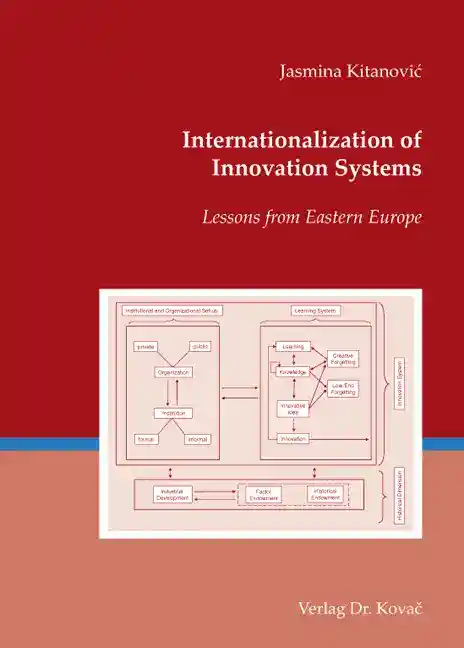Jasmina KitanovićInternationalization of Innovation Systems
Lessons from Eastern Europe
EURO-Wirtschaft – Studien zur ökonomischen Entwicklung Europas, Band 35
Hamburg 2009, 412 Seiten
ISBN 978-3-8300-4453-6 (Print)
ISBN 978-3-339-04453-2 (eBook)
Zum Inhalt
Innovation and technological change are repeatedly recognized as the main driving forces for economic development and growth. Economies which are characterized by faster growth rates compared to others are those which are in a position to create and economically use new technologies, production processes and products more successfully. In addition, economic development depends on the increasing process of globalization. Economies have to be integrated within global markets in order to get access to information, technology and expertise that are necessary to become and stay competitive on domestic and foreign markets. This is true for both highly industrialized and latecomer economies such as those located in Central and Eastern Europe. It is the latter group of economies that is at the heart of this book as special emphasis is put on a former socialist country of Eastern Europe - Serbia.
Actors of transition economies have to build strong local clusters and have to be actively integrated into international relations. The developmental growth of these economies depends on achieving a reasonable mix of domestic and foreign sources of knowledge due to weak technological and innovation capabilities of their local firms. It is the approach of innovation systems that places learning and innovation at the center of focus, but systematically underestimates the impact of international relationships. The first part of this book shows a way to solve this problem: The approach of innovation systems is supplemented by explicitly integrating international linkages with the help of the concept of Global Value Chains. In so doing, an approach has been built that allows a systemic analysis of both an innovation system‘s internal processes in terms of structural and relational adjustments within the system‘s boundaries and its external processes resulting from the influence of the foreign environment on the system‘s ability to generate innovation. As it is concluded within this book, this systemic approach holds for every kind of economy under consideration.
The practicability of this new approach on innovation system analysis is demonstrated in the last part of the book. In Central and Eastern European countries the automotive industry has become a symbol of decisive economic and social changes during their period of transition in the 1990s. The development of the Serbian automotive industry seems to be a matter of particular interest in this respect. The role of the automotive industry was of importance in nearly all Central and Eastern European countries in the past; their industries were running through processes of recovering and restructuring right from the beginning of the economies‘ transition. The situation in Serbia is quite different. Until the 1980s the former Yugoslav automotive industry was one of the most successful industries of the country. On the contrary, the actual Serbian automotive industry still suffers from embargo measures enforced during the 1990s Balkan wars as well as from its socialist heritage. This book offers an answer to the question, whether the Serbian automotive system of innovation is confronted with structural national or sectoral problems that make the industry’s upgrading and its integration into the global automotive chain difficult.
